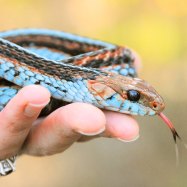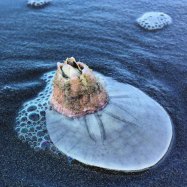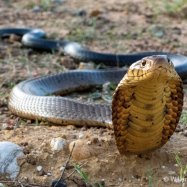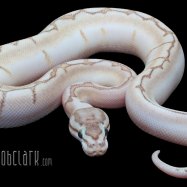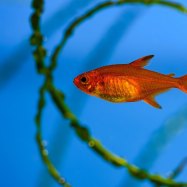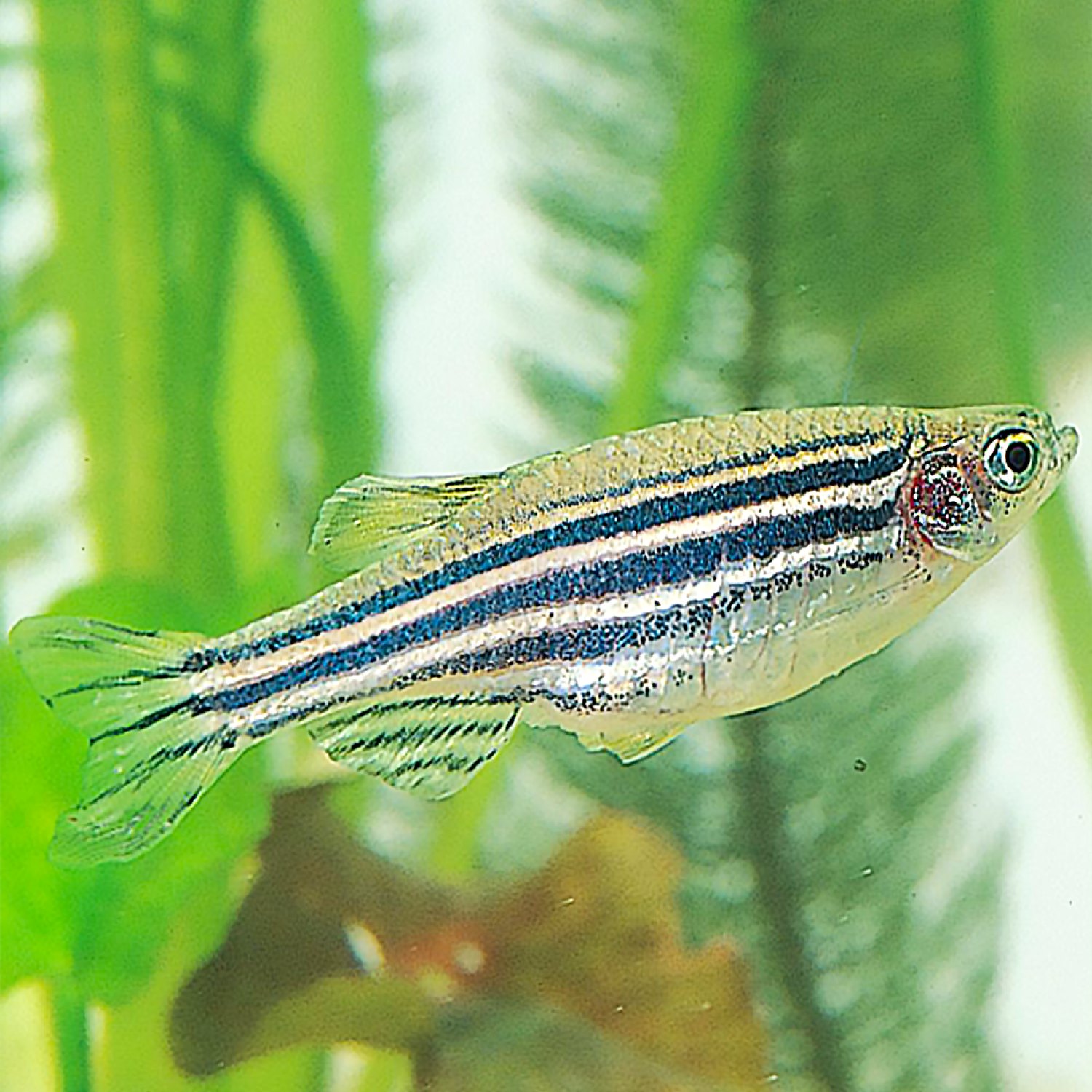
Danios
2.5-5 cm
Danios are small, colorful fish found in rice fields, streams, and rivers. With a length of 2.5-5 cm, they are perfect for small aquariums. They belong to the Cyprinidae family and have a slender, cylindrical body shape. These active and playful fish are a great addition to any freshwater tank. #Animals #Danios #Fish #Aquarium
Animal Details Summary:
Common Name: Zebrafish
Kingdom: Animalia
Habitat: Freshwater
The Fascinating World of Zebrafish:
An Insight into the Enigmatic Danios
In the vast and diverse animal kingdom, there are species that have caught our imagination with their unique features and behavior. One such animal is the zebrafish, scientifically known as Danio rerio. These small freshwater fish are a part of the Cyprinidae family and are native to Southeast Asia, specifically originating from India.Zebrafish, or Danios, as they are commonly known, are fascinating creatures that have captured the attention of scientists, researchers, and aquarium enthusiasts alike Danios. They may appear small and unassuming, but they possess some incredible features and characteristics that make them stand out in the animal kingdom.
The Physical Appearance of Danios
Danios are small fish, ranging from 2.5-5 cm in length, with a slender and cylindrical body shape. They have a distinctive blue and silver striped pattern that runs horizontally along their body, giving them an unmistakable appearance. This coloration also helps them camouflage in their natural habitat of rice fields, streams, and rivers.One striking feature of zebrafish is their unique ability to regenerate their tissues and organs. They have the ability to heal wounds quickly, making them one of the few creatures in the animal kingdom to possess this incredible trait.
The Natural Habitat of Danios
As mentioned earlier, Danios are native to Southeast Asia, with their natural habitat primarily being freshwater. They are commonly found in rice fields, streams, and rivers, where the water is clean and well-oxygenated Drum Fish.In their natural habitat, Danios are known to be highly adaptable to different water conditions and can thrive in a variety of environments. This hardiness makes them ideal for aquariums and has contributed to their popularity as a pet fish.
The Diet of Zebrafish
Danios are considered to be omnivorous, which means they eat both plants and animals. In their natural habitat, they feed on small insects, worms, larvae, and even some plant matter. In aquariums, they can be fed a variety of foods such as flakes, pellets, and live or frozen food. It is important to provide them with a well-balanced diet to ensure their health and vibrant coloration.The Behavior of Danios
One of the most fascinating aspects of Danios is their behavior. They are highly social fish and prefer to live in groups, known as schools. In their natural habitat, they form large schools for protection and to increase their chances of finding food.In aquariums, Danios thrive when they are kept in groups of at least 5-6 individuals. They are highly active and spend most of their time swimming around the tank, making them a delightful sight to observe. They are peaceful fish and can be kept with a variety of other freshwater fish.
The Role of Danios in Research
Since their discovery in the 16th century, Danios have played a significant role in scientific research. In the 1980s, scientists discovered that zebrafish have a remarkably similar genetic makeup to humans, making them valuable for genetic research.They have a short lifecycle of about 3-4 months, and their embryos develop outside of the mother's body, making them ideal for studying developmental processes. Their transparent eggs and larvae also allow scientists to observe the internal development of the fish, making them a crucial species in studying genetics and biological processes.
The Conservation Efforts for Zebrafish
Despite being a popular aquarium fish and a vital research subject, wild populations of Danios are threatened by human activities such as pollution and habitat destruction. As a result, conservation efforts are in place to protect their natural habitats and ensure their populations continue to thrive.Organizations such as the IUCN (International Union for Conservation of Nature) and ZSL (Zoological Society of London) conduct research and implement conservation strategies to protect zebrafish populations. These efforts include habitat restoration, pollution control, and sustainable fishing practices.
The Impact of Danios in the World of Science and Medicine
In the world of science and medicine, Danios have contributed significantly to various research areas, including genetics, developmental biology, and neuroscience. Their unique genetic makeup and ability to regenerate tissues have made them invaluable in medical research, particularly in the study of diseases and potential treatments.Danios have also played a crucial role in the development of organoids, miniature models of human organs that can be grown and studied in the lab. These organoids have the potential to revolutionize the field of medicine and provide new insights into the functioning of organs and the development of diseases.
The Future of Zebrafish Research
As research on zebrafish continues to expand, scientists are exploring new areas where these fish can contribute, such as drug testing and environmental monitoring. With their unique characteristics and ability to adapt, Danios have the potential to make significant contributions in these fields.Additionally, due to their social behavior and sensitivity to environmental changes, zebrafish can also be used to study the effects of climate change on aquatic organisms. This research can provide valuable insights into the impact of human activities on aquatic ecosystems and help in developing conservation strategies.
The Ancient Roots of Danios
While zebrafish may seem like a recent discovery, their family, Cyprinidae, has been around for millions of years. Ancient fossils of this family have been found dating back to the late Cretaceous period, over 65 million years ago. This long evolutionary history highlights their resilience and adaptability, making them a truly remarkable species.The Significance of Danios in Popular Culture
Apart from their contributions to science and the animal kingdom, Danios have also made their way into popular culture. They have been featured in movies, television shows, and even video games. The distinctive blue and silver stripes of zebrafish have become synonymous with the species and are instantly recognizable.In Conclusion
Danios, or zebrafish, are truly remarkable creatures that have captured the hearts and minds of people all over the world. From their stunning physical appearance and unique characteristics to their contributions to scientific research, they continue to amaze and intrigue us.As our knowledge and understanding of these fish increases, so does our appreciation for their importance in the natural world. With continued efforts towards conservation and research, we can ensure that Danios remain a part of our world for many years to come.

Danios
Animal Details Danios - Scientific Name: Danio rerio
- Category: Animals D
- Scientific Name: Danio rerio
- Common Name: Zebrafish
- Kingdom: Animalia
- Phylum: Chordata
- Class: Actinopterygii
- Order: Cypriniformes
- Family: Cyprinidae
- Habitat: Freshwater
- Feeding Method: Omnivorous
- Geographical Distribution: Southeast Asia
- Country of Origin: India
- Location: Rice fields, streams, rivers
- Animal Coloration: Blue and silver stripes
- Body Shape: Slender and cylindrical
- Length: 2.5-5 cm
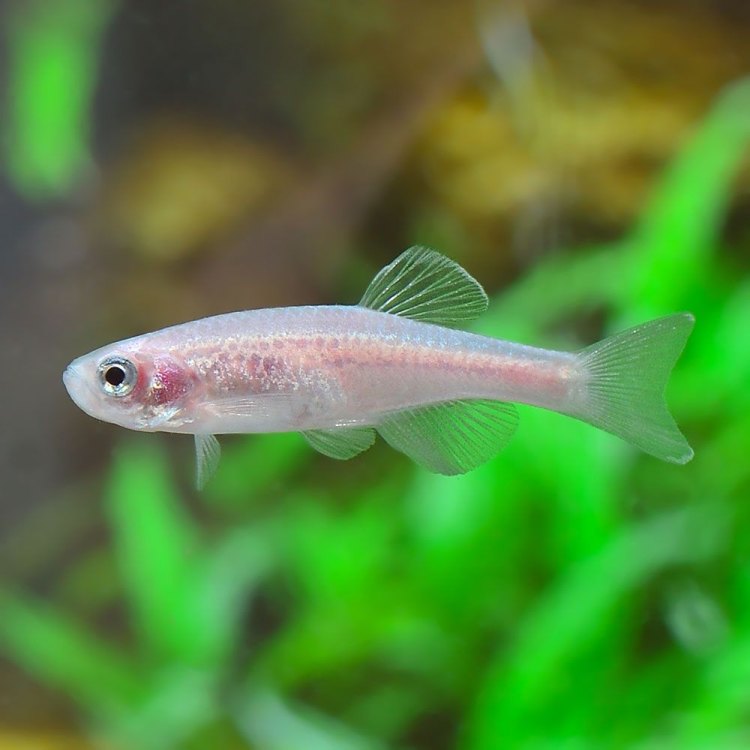
Zebrafish
- Adult Size: Up to 3-4 cm
- Average Lifespan: 2-5 years
- Reproduction: Egg-laying
- Reproductive Behavior: Group spawning
- Sound or Call: No sound production
- Migration Pattern: Non-migratory
- Social Groups: Schooling fish
- Behavior: Active and social
- Threats: Predation, habitat loss
- Conservation Status: Not evaluated
- Impact on Ecosystem: Used as a research model
- Human Use: Aquarium fish, biomedical research
- Distinctive Features: Blue stripes, long barbels
- Interesting Facts: Regenerate damaged tissue, high reproductive rate
- Predator: Larger fish, birds
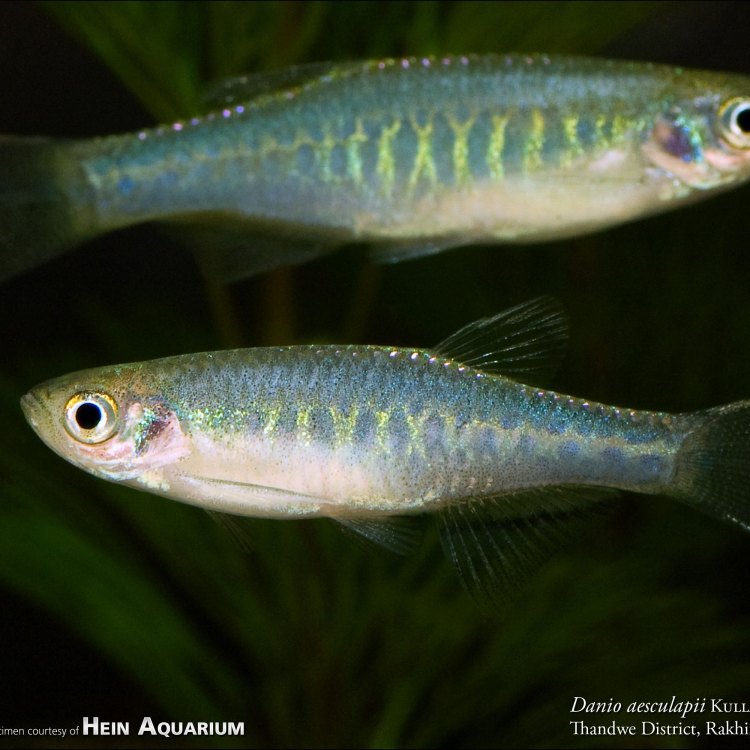
Danio rerio
The Amazing World of Danios: A Small But Mighty Fish
The world of aquatic animals is full of wonder and diversity, with a vast range of shapes, sizes, and colors. Among these fascinating creatures is a small yet mighty fish called Danios. These little fish may not seem like much at first glance, but they possess unique characteristics that make them a true wonder of the underwater world. In this article, we will dive into the world of Danios and discover what makes them truly remarkable PeaceOfAnimals.Com.Danios, also known as the zebra fish or the striped Danio, are freshwater fish that belong to the Cyprinidae family. These fish are native to the shallow, clear waters of the Ganges and Brahmaputra rivers in India, as well as its neighboring countries of Nepal, Bangladesh, and Myanmar. Over the years, Danios have become popular among aquarium hobbyists and researchers due to their vibrant colors, interesting behavior, and unique features.
One of the most distinctive features of Danios is their blue stripes. These stripes run horizontally along their slender bodies, adding to their aesthetic appeal. In addition to the stripes, Danios also have long barbels, which are sensory organs located near their mouths. These barbels help them navigate and locate food in their environment. These features make Danios stand out among other fish and have also earned them the nickname "zebra fish."
Danios are relatively small fish, with an average adult size of 3-4 cm Diminutive Woodrat. However, do not let their size fool you; these tiny fish are highly active and incredibly social. In the wild, Danios live in schools consisting of hundreds of individuals, and the same applies in captivity. It is recommended to keep a group of at least five Danios together in an aquarium to mimic their natural social behavior.
As social creatures, Danios are also very active. They are constantly on the move, swimming throughout the water column, and exploring their surroundings. This behavior adds liveliness to any aquarium and makes them a popular choice for community tanks.
Danios are known for their high reproductive rate, with females capable of producing up to 300 eggs in a single spawn. This makes them an ideal species for breeding programs in aquariums. In the wild, Danios reproduce through egg laying, where the female releases eggs, and the male fertilizes them externally. After being released, the eggs stick to the plants or substrate, where they hatch in just a few days. In captivity, breeding Danios is relatively easy, making them a popular choice for beginner fish breeders.
When it comes to their lifespan, Danios can live up to 2-5 years. However, in captivity, they may live longer with proper care. Like most fish, Danios require a well-maintained aquarium with suitable water parameters for them to thrive. They are tolerant of a wide range of water conditions, with a temperature range of 18-26 degrees Celsius and a pH level of 6.5-8.0. Regular water changes and a balanced diet can help ensure their longevity in captivity.
From an ecological perspective, Danios play an essential role in their natural habitat. They are non-migratory fish, meaning they do not undertake long-distance movements as a part of their life cycle. Instead, they prefer to stay in their home rivers, streams, and ponds. As schooling fish, Danios also help maintain the balance of the underwater ecosystem by keeping their environment clean and healthy. Their diet consists of small insects, crustaceans, and aquatic plants, which they consume in large quantities, keeping the populations of these organisms in check.
Sadly, Danios, like many other aquatic species, face various threats in their natural habitat. The most significant threat to them is predation, where they fall prey to larger fish and birds. In addition, the destruction of their habitats due to dam construction and pollution also poses a considerable threat to their survival. As a result, the conservation status of Danios is not evaluated, and they do not receive any significant protection from the government or conservation organizations.
However, while their conservation status may not be evaluated, Danios have had a significant impact on the scientific world. These fish are widely used as research models in various fields of study, including genetics, developmental biology, and environmental toxicology. Due to their small size, fast maturation rate, and transparent embryos, they are an ideal species for studying various biological processes. Scientists have used Danios to study organ development, tissue regeneration, and even the effects of microgravity on the human body. Their unique features, such as the ability to regenerate damaged tissue, make them ideal for research and provide valuable insights into medical advancements.
Danios also play a significant role in the fishkeeping hobby. They are popular as aquarium fish due to their hardiness, low maintenance, and peaceful nature. Their bright coloration and active behavior make them an attractive addition to any community tank. In recent years, there has been a rise in genetically modified Danios, where scientists have altered their genes to exhibit different colors and patterns. These "designer" Danios have become increasingly popular among fish enthusiasts, sparking debates on the ethical implications of genetically modifying animals for human amusement.
In conclusion, Danios may seem like small, ordinary fish at first, but they are far from it. These little wonders possess unique characteristics that make them stand out in the underwater world. From their blue stripes and long barbels to their high reproductive rate and active behavior, Danios are a truly remarkable species. Sadly, they face numerous threats in their natural habitat and have not received much attention from conservationists. However, they continue to play a vital role in the scientific community and the fishkeeping hobby. So, the next time you see a zebra fish or a striped Danio, remember that there is more to them than meets the eye.
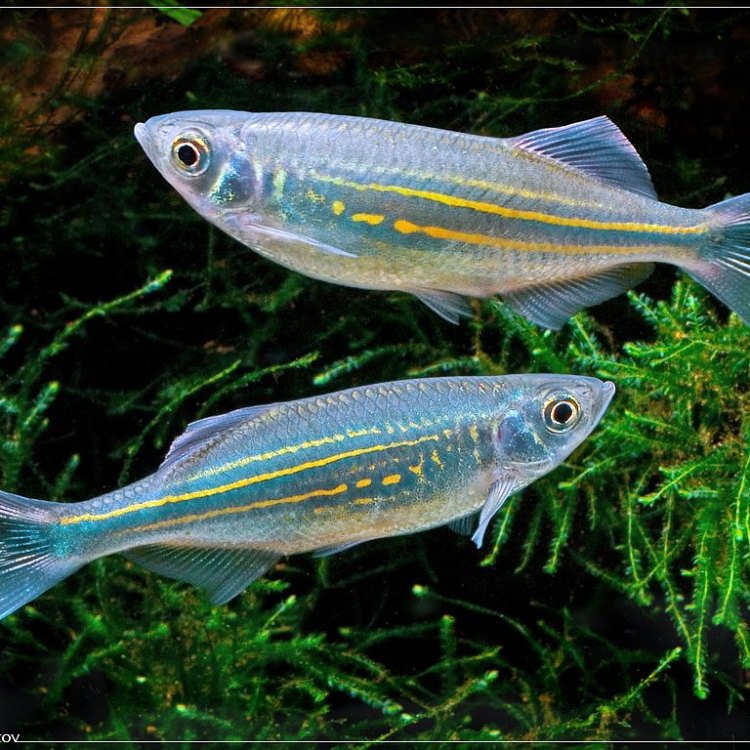
The Fascinating World of Zebrafish:
An Insight into the Enigmatic Danios
Disclaimer: The content provided is for informational purposes only. We cannot guarantee the accuracy of the information on this page 100%. All information provided here may change without prior notice.



